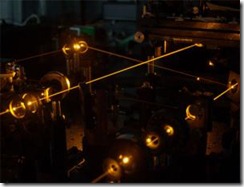In the last few years the world has experienced a "cooler period" since record high temperatures in summer 1998.
This has been used by global warming sceptics as proof that greenhouse gases are not causing a rise in temperatures.
However a new study by Nasa said the warming effect of greenhouse gases has been masked since 1998 because of a downward phase in the cycles of the sun that means there is less incoming sunlight and the El Nino weather pattern causing a cooling period over the Pacific.
But from this year solar activity will begin to pick up again and the El Nino phenomenon will cause storms and heat waves.
The research, to be published in Geophysical Research Letters, was carried out by Nasa's Goddard Institute for Space Studies the US Naval Research Laboratory.
It adds to existing data from the UN's Intergovernmental Panel on Climate Change (IPCC) that predicted temperatures will rise because of an increase in greenhouse gases trapping heat in the atmosphere.
Because greenhouse gases stay in the atmosphere, temperatures are set to increase over the next few years because the world is producing more carbon dioxide.
The new study adds the effect of El Nino, which is entering a new warm phase and of the impact of the solar cycle.
Gareth Jones, a climate research scientist at the Met Office, said the effect of global warming is unlikely to be masked by shorter term weather patterns in the future.
He said that 50 per cent of the 10 years after 2011 will be warmer than 1998. After that any year cooler than 1998 will be considered unusual.
"The amount of warming we expect from human impacts is so huge that any natural phenomenon in the future is unlikely to counteract it in the long term," he said.
from Telegraph …
Njoy … ![]()






